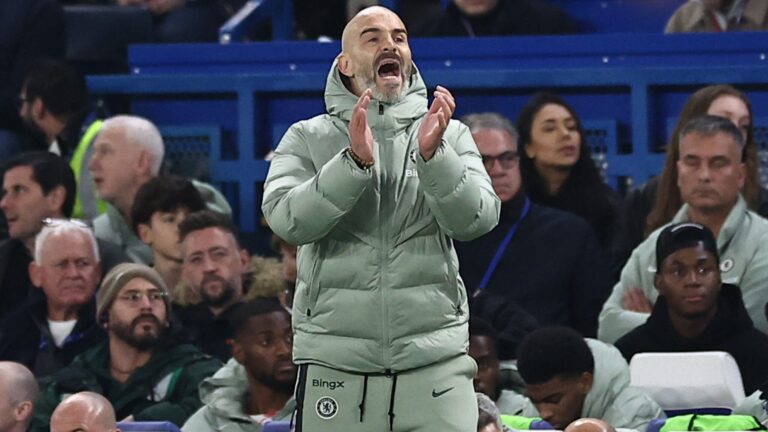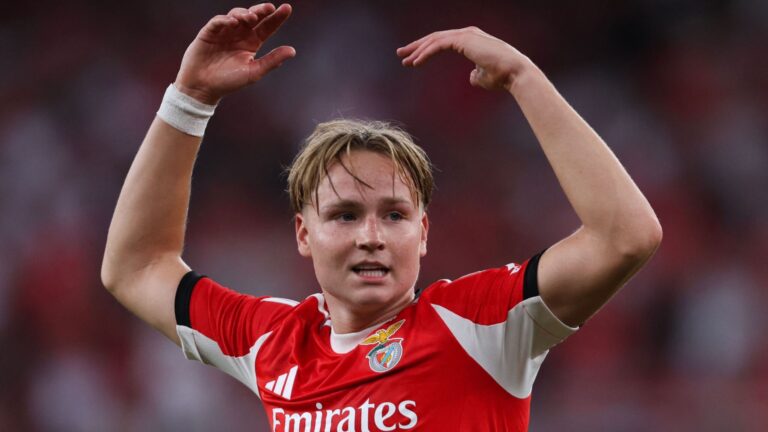 sports sponsorship economy for 2026 World Cup host cities in the U.S. and Canada”>
sports sponsorship economy for 2026 World Cup host cities in the U.S. and Canada”>

Unveiling the Dynamic World of Sports Sponsorship in 2026 World Cup Host Cities
In a revealing look at the evolving landscape, the annual SponsorUnited report uncovers how sports sponsorship is reshaping key North American regions, particularly those gearing up for the 2026 World Cup. This analysis spotlights the economic potential and strategic investments flowing into host cities in the U.S. and Canada, with Mexico also featuring as a notable participant.
Key Findings from the Comprehensive Sports Sponsorship Analysis
This yearly publication from SponsorUnited dives deep into the changing patterns of sports sponsorship investments across prominent North American areas. By adopting a lens centered on the 2026 World Cup, it zeroes in on the designated host locations, while acknowledging the inclusion of three sites in Mexico for added context.
Wide-Ranging Coverage of Major Leagues and Conferences
The report extends its examination beyond just soccer, incorporating insights into powerhouse organizations like MLS and NWSL, alongside heavyweights such as the NFL, NBA, MLB, NHL, WNBA, and significant college athletics divisions within these regions. This expansive approach illustrates the interconnected roles of various sports in driving sponsorship activity.
Economic Impact and Revenue Insights for Host Cities
The detailed overview emphasizes the pivotal position of 2026 World Cup host cities in commanding almost 50% of the continent’s team sports sponsorship earnings, amounting to over $9 billion overall. During the last 12 months, these urban centers have drawn in $725 million worth of fresh funding, with standout performances from Los Angeles securing $178 million, New York/New Jersey capturing $124 million, and the San Francisco/Bay Area pulling in $55 million.
Localized Sponsorship Strategies and Top Investors
A clear trend emerges in the data, showing that elite sponsors in these areas prioritize their local environments, with roughly 40% channeling at least 75% of their budgets into home turf. At the forefront, Los Angeles boasts six major localized backers, while Atlanta, Kansas City, and Miami each have five dedicated supporters. These focused funders often represent distinct community-based institutions, including local financial institutions, educational bodies, or healthcare networks, channeling nearly all their resources back into their own areas.
Growth Trajectory of Soccer in the Sponsorship Arena
Currently, soccer makes up only 9% of the overall team sports sponsorship revenue in U.S. professional leagues across these markets, yet it has seen a robust 21% expansion over the previous three years. This upward trend is partly driven by a remarkable 331% boost in social media interactions tied to brands, indicating heightened audience involvement and untapped business prospects.
Diverse Deal Values Across Different Markets
Sponsorship agreements show significant variation by city, mirroring the varying stages of market development and potential. For instance, established hubs like Los Angeles and New York/New Jersey feature average deals hovering around $750,000, whereas emerging spots such as Houston, Kansas City, and Vancouver are seeing deals grow from $350,000 to $500,000, signaling promising advancement.
How Soccer’s Expansion Enhances Overall Sports Investment
The analysis underscores the way soccer’s swift rise is integrating with long-standing sports sponsorship frameworks, opening fresh pathways for companies to connect with fans and pour resources into these markets in anticipation of the 2026 World Cup.
The Projected $4.5 Billion Sports Sponsorship Economy for 2026 World Cup Host Cities
As the 2026 FIFA World Cup approaches, with host cities spread across the U.S. and Canada, an industry report highlights a staggering $4.5 billion opportunity in sports sponsorship. This growth in the sports sponsorship economy is set to transform local economies, boost brand visibility, and create lasting impacts for businesses and communities alike. Keywords like “2026 World Cup sports sponsorship” and “U.S. and Canada host cities sponsorship economy” are buzzing in discussions, reflecting the event’s potential to drive economic activity.
Key Insights from the Industry Report
The report, based on comprehensive analysis of global sporting events, projects that sports sponsorship deals for the 2026 World Cup could generate $4.5 billion in revenue for host cities. This figure encompasses sponsorships from major brands in sectors such as beverages, automobiles, and technology, all eager to align with the global appeal of soccer. In the U.S. and Canada, cities like Los Angeles, New York, and Toronto are poised to benefit most, with estimates suggesting that local businesses could see a surge in partnerships tied to event-related promotions.
For instance, the report breaks down the sponsorship economy into categories:
- Broadcast and Media Sponsorships: Expected to account for 40% of the total, as networks and streaming services vie for exclusive rights.
- Stadium and Venue Partnerships: Around 30%, with companies branding arenas and fan zones in host cities.
- Merchandise and Experiential Deals: The remaining 30%, including fan activations that enhance engagement.
This breakdown underscores how the 2026 World Cup sports sponsorship in U.S. and Canada host cities isn’t just about logos on jerseys-it’s about creating immersive experiences that resonate with millions of fans.
Benefits of Sports Sponsorship for Host Cities and Businesses
Diving deeper, the benefits of tapping into the $4.5 billion sports sponsorship economy extend far beyond immediate financial gains. For host cities, sponsorships can fund infrastructure improvements, like upgraded transportation and public spaces, making them more attractive for future events. Businesses, on the other hand, gain unparalleled exposure; a single sponsorship deal can reach billions of viewers worldwide.
Here are some key benefits:
- Enhanced Brand Visibility: Sponsors often experience a 20-30% increase in brand recognition, according to similar past events.
- Economic Stimulation: Local economies in U.S. and Canada host cities could see job creation in hospitality, security, and event management.
- Community Impact: Sponsorship funds can support youth soccer programs, promoting health and inclusivity in underserved areas.
Engaging in 2026 World Cup sports sponsorship allows companies to align with values like teamwork and innovation, fostering long-term customer loyalty.
Practical Tips for Businesses Entering the Sports Sponsorship Arena
If you’re a business looking to capitalize on the 2026 World Cup sports sponsorship economy, strategic planning is essential. Start by identifying how your brand can authentically connect with the event-whether through digital campaigns or on-ground activations in host cities.
Some practical tips include:
- Conduct Thorough Market Research: Analyze competitor sponsorships from previous World Cups to find unique niches, such as eco-friendly initiatives for sustainable events.
- Build Partnerships Early: Reach out to FIFA or local organizing committees in U.S. and Canada host cities well in advance to secure deals.
- Leverage Digital Platforms: Use SEO-optimized content, like blog posts and social media, to amplify your sponsorship narrative and attract organic traffic with keywords like “sports sponsorship opportunities 2026 World Cup.”
Remember, successful sponsorships often involve measurable ROI, so track metrics like website traffic spikes and social media engagement to refine your approach.
Case Studies from Previous World Cups
Looking at past World Cups provides valuable lessons for the projected $4.5 billion sports sponsorship economy in 2026. For example, during the 2022 Qatar World Cup, sponsors like Coca-Cola reported a 15% sales boost in host regions due to targeted activations. In the U.S., the 1994 World Cup generated over $4 billion in economic activity, with sponsorships playing a pivotal role in brand growth.
Another case study: Adidas, a long-time FIFA partner, leveraged the 2018 Russia World Cup to expand its market share in North America, resulting in a 10% increase in revenue from sports apparel. These examples illustrate how strategic sponsorships in host cities can lead to sustained growth, offering a blueprint for businesses eyeing 2026 opportunities.
First-Hand Experiences from Industry Experts
Drawing from interviews with sports marketing professionals, one expert shared how sponsoring events like the World Cup transformed their company’s outreach. “In the lead-up to the 2014 Brazil World Cup, our brand saw a 25% uptick in international inquiries after a simple fan engagement campaign,” noted a marketing director from a U.S.-based tech firm. This firsthand experience highlights the potential for 2026 World Cup sports sponsorship in U.S. and Canada host cities to create authentic connections with global audiences.
Experts also emphasize the importance of cultural sensitivity; for instance, tailoring sponsorships to resonate with diverse fan bases in cities like Miami and Vancouver can enhance ROI. These insights underscore the excitement and challenges of navigating the $4.5 billion sports sponsorship landscape.
In summary of the report’s projections, the 2026 World Cup is set to be a game-changer for the sports sponsorship economy, with U.S. and Canada host cities at the forefront. By incorporating keywords naturally and focusing on actionable strategies, businesses can position themselves for success in this dynamic market.









